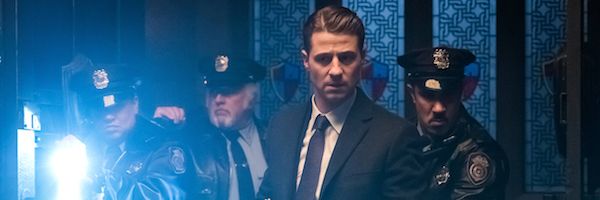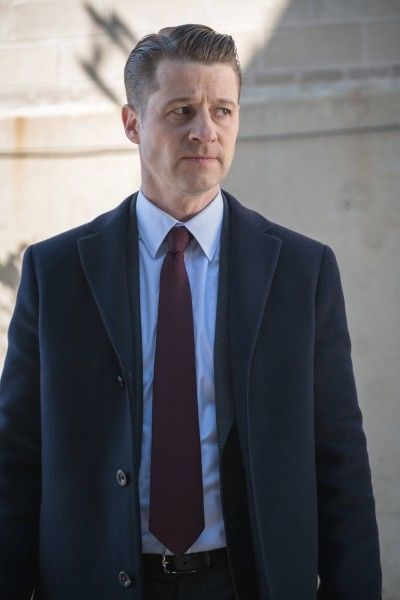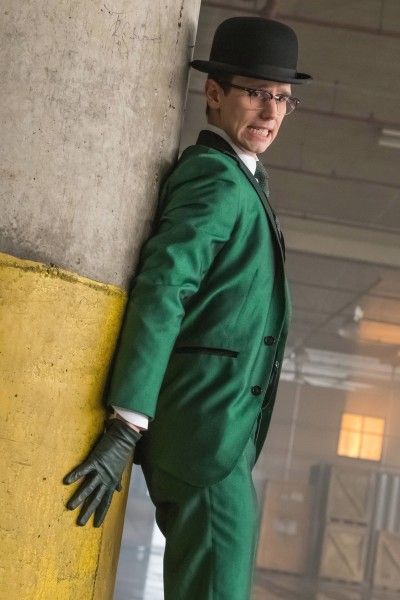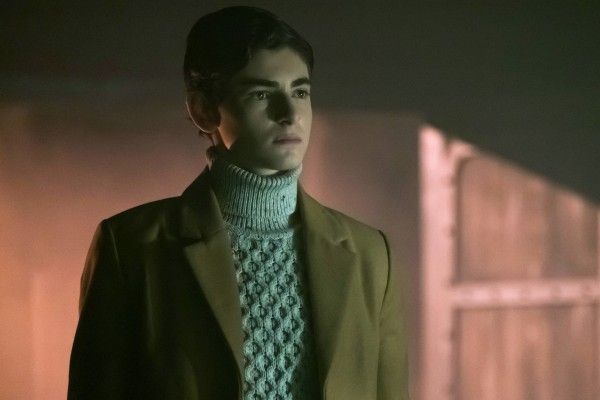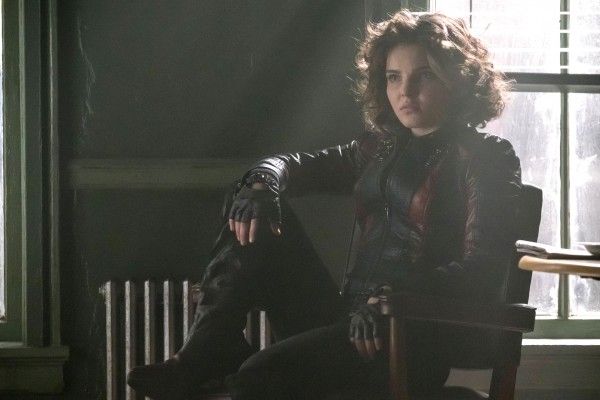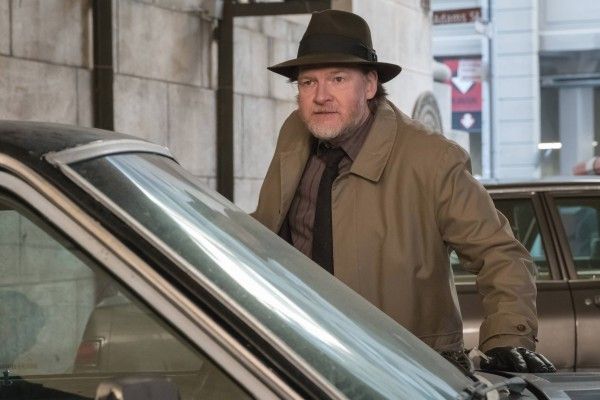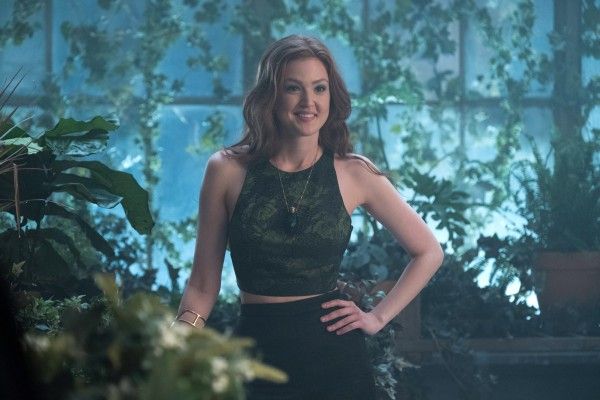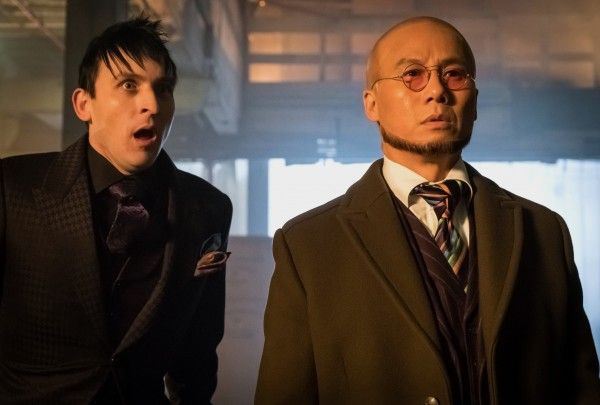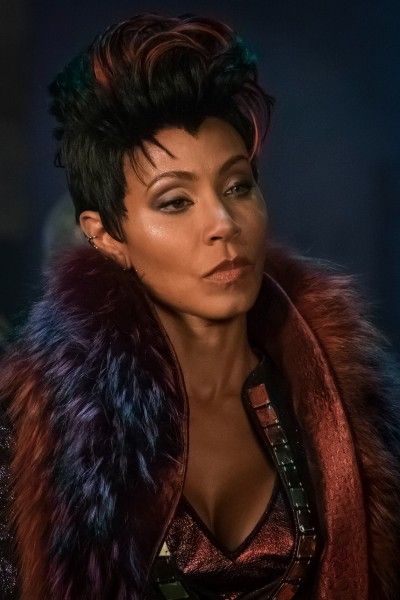What is Gotham? At this point, Fox’s bonkers Batman prequel has more definitions than its titular city has muggers and pickpockets. It’s a show that devoted its third episode entirely to balloon-themed murder, a story that once climaxed with James Frain being blown up with a bazooka, a narrative that casually included a prepubescent Bruce Wayne (David Mazouz) smashing his classmate’s face with a golden watch. It’s a lot, is what I’m saying, but ostensibly – buried a few layers beneath the Batcave – Gotham is an origin tale. It chronicles the stories before the stories, showing the familiar faces before they put on the masks. It is Batman when he was but a Bat Boy; Jim Gordon (Ben McKenzie) when he had enough faith in humanity to resist growing a pencil mustache; Penguin (Robin Lord Taylor) when he was closer to Crime Intern than Crime Boss; and The Riddler (Cory Michael Smith) when he was less puzzle-maker mastermind and more vaguely menacing Sudoku challenge.
Or, that is, until “Destiny Calling” and “Heavydirtysoul.” Gotham’s two-part Season 3 finale took the series’ most significant step forward, even offering up a proto-Dark Knight, in an effort to merge who these characters are with the figures they become. Like all great Batman stories, it did so by circling back to my original question, and attempting to show the true face of Gotham City itself.
Of course, in the opening moments that face is one of pure, unfettered mayhem, thanks the rage-inducing Tetch Virus Bomb detonated by The Court of Owls in last week’s “Pretty Hate Machine.” An elderly woman shoots up a bank, there is anarchy in the streets, and a train flies past it all overhead engulfed in flames. In fairness, this is roughly 20 percent worse than your average Tuesday in Gotham City, but that is essentially the point. This place is a hellmouth on its best day, but someone needed to hold a mirror up to the worst it has to offer before someone stood up and said “enough.”
That someone, for as long as it takes Batman to navigate puberty, is Jim Gordon. But even here, amid the chaos of the virus and the several criminal factions using it as cover, Jim has his own demons to fight. His natural sense of justice has been amplified by the Tetch Virus to murderous judge-jury-executioner levels, complete with a recurring chorus of “killer, killer, killer” echoing inside his head. Of course, a voice telling Jim to shoot all criminals in the face is, let’s say, only 15 percent worse than his average inner monologue. But it works well here because he has to be better than that to save a Tetch-infected Lee Thompkins (Morena Baccarin).
These hyper-personal relationships are where Gotham usually excels. For everything this series struggles with—things like tonal consistency, believable levels of spandex, detective work that doesn’t involve clues literally landing on Jim Gordon’s head—it always works when it boils the madness down to intimate character study. Here, episode writers Danny Cannon and Robert Hull play with the possibility that both Lee and Jim are better off as a savage couple of monsters, travelling the DC Universe side-by-side in mutual, virus-assisted bliss. Surely, director Rob Bailey intentionally frames the shot of Lee and Jim on the subway platform, decked out in matching black sunglasses like they just entered The Matrix in order for them to look the happiest, the most right they have seemed since their Season 2 flirtations? (It helps that Baccarin, for the first time on this show, seems to be having the time of her life).
All of this is why Jim’s ultimate decision to forsake a life of love and murder with two pricks of the Tetch Virus antidote feels so well-earned. Harvey Bullock’s (Donal Logue, never better) assertion that Jim is the “best cop” he’s “ever worked with” is a bit of a stretch—Jim has never been a good cop, just one that yells a lot—but in the end Jim Gordon is simply the most moral man in Gotham. He has a ton of darkness hanging over his head, not to mention a fair share of blood on his hands, but the good in him has always shined just that much brighter. “I don’t know if Gotham deserves saving,” Lee narrates in her episode-closing letter to Jim, “but I do know one thing. If anyone can save it, it’s you.”
Until a mentally unstable billionaire in a bat costume starts elbowing criminals into comas, Jim is certainly, to borrow his own phrase, “the least worst option.”
The same cannot be said for Oswald Cobblepot or Edward Nygma, two men content with ignoring the city’s destruction for the chance to murder the other. I don’t buy for a second Oswald’s sudden unbreakable allegiance to Fish Mooney, a woman he already killed himself, especially because Jada Pinkett Smith continues to somehow put in a performance too over-the-top even for a show where the only directorial note is “do more.” But Robin Lord Taylor and Cory Michael Smith manage to make their villainous rivalry feel real and, oddly, relatable. The two actors are physical opposites of each other. Taylor’s diminutive stature works particularly well across from Smith, who in full Riddler green bears no small resemblance to a beanstalk. But both play their roles as moral mirrors of each other. When Edward calls Oswald a “spoiled child,” he’s projecting his own insecurities. The moment Oswald says Edward “isn’t as smart as he thinks he is,” he is describing his own biggest flaw.
Eventually, Oswald orders Victor Fries (Nathan Darrow), as always looking like a cross between an office water cooler and Buzz Lightyear, to suspend Edward in ice. Like Jabba the Hutt before him, Oswald plans to display his rival as the centerpiece of his club, The Iceberg Lounge. Which is perfect, really. How else do we see our worst enemies, other than frozen in their worst moment, forever?
Next to the muscle of Jim and Lee’s storyline, and the soul between Oswald and Eddie, the heart of Gotham’s third season finale—of its entire third season, really—comes from Mazouz’s Bruce Wayne and Sean Pertwee’s Alfred Pennyworth. Sure, “Destiny Calling” and “Heavydirtysoul” were filled with loud moments; with shocking deaths (literally, in Barbara Kean’s case, hopefully not the last we see of the endlessly charismatic Erin Richards); with nods to the comic books (Catwoman got her whip! Butch Gilzean will become the nursery-rhyming zombie Solomon Grundy, I guess!). But it’s the quiet conversations between the boy-billionaire and his butler that stuck with me. I didn’t believe the part-one cliffhanger of Bruce killing Alfred would stick—not with Arrow’s favorite narrative crutch, The Lazarus Pit, sitting right there—but I believed it when Bruce called Alfred “family,” when he decided that family is all he needed to begin making Gotham City a safer place.
And that’s where we leave off, heading into Season 4, with Bruce donning a proto-Batsuit of ski mask and tactical turtleneck to take down a mugger in Crime Alley. It’s not perfect but that’s Batman, a character that, like the city he protects, has always been defined by his own duality. He’s a savior in the form of a monster. He will not kill, but he’ll horribly maim. He saves others from loss because he himself is so haunted by it. The words Alfred tells Bruce here, sitting across from him at a G.C.P.D. interrogation table, doubles for the thesis of every Batman story there has ever been. “There is no life, there is no love,” Alfred says. “Without pain.”

